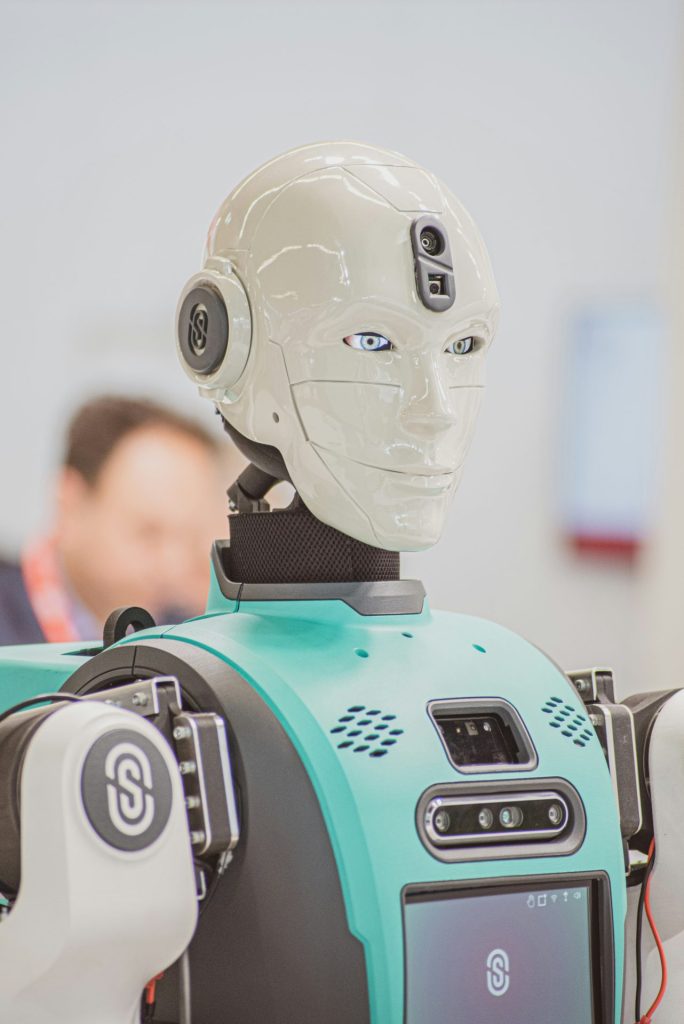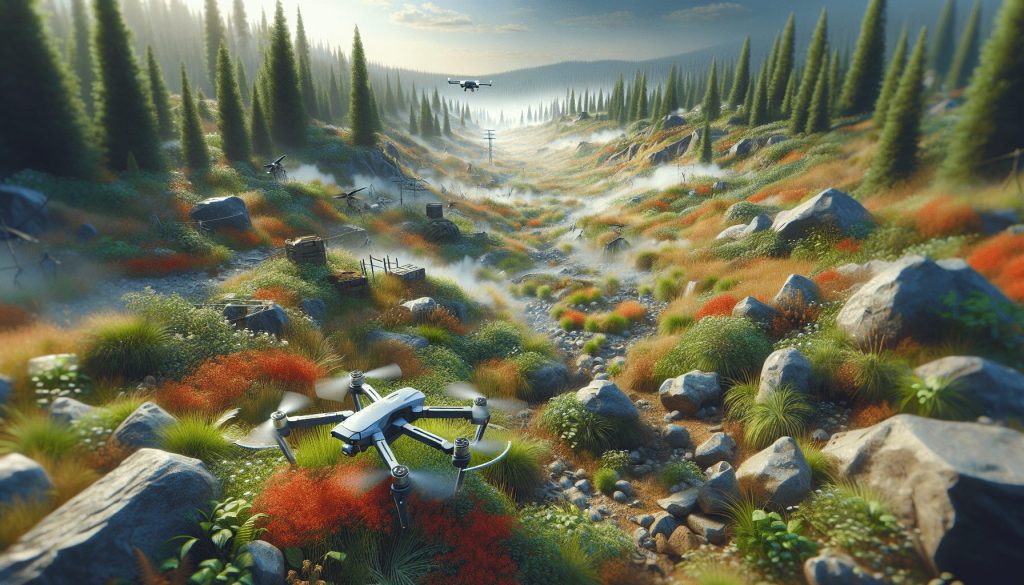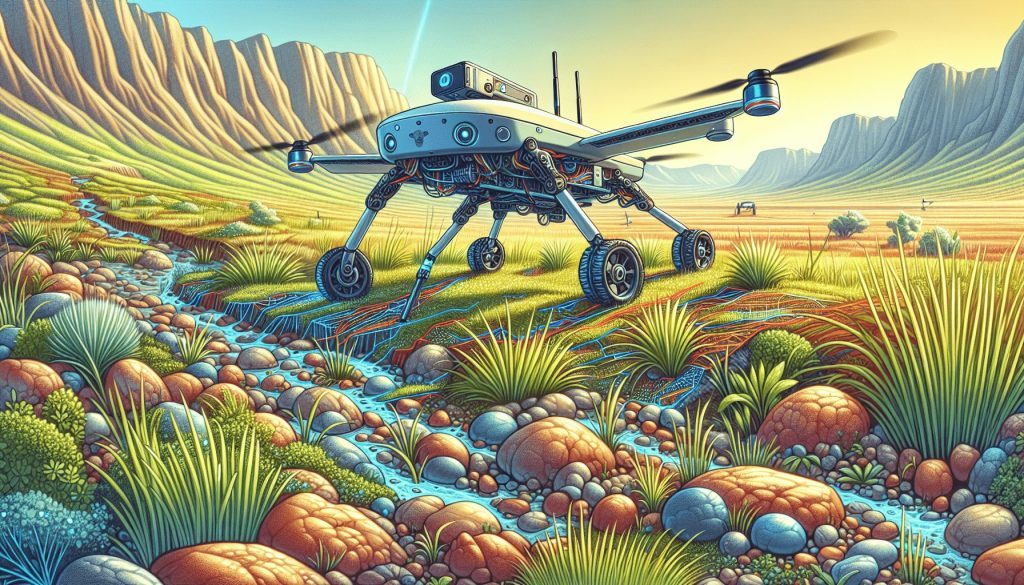Physical Address
304 North Cardinal St.
Dorchester Center, MA 02124
Physical Address
304 North Cardinal St.
Dorchester Center, MA 02124


This post may contain affiliate links. As an Amazon Associate, we may earn commissions from qualifying purchases.
Have you ever wondered how land drones navigate complex terrains and interact seamlessly with their surroundings? These incredible pieces of technology are becoming a ubiquitous part of various industries, from agriculture to search and rescue missions. Understanding how they function can give us insight into their vast potential and applications.

Land drones, often referred to as unmanned ground vehicles (UGVs), are robotic vehicles that operate on the ground without an onboard human presence. These drones can be controlled remotely or operate autonomously, thanks to advanced sensors and software. They interact with their environment using a suite of technologies that enable them to “see,” “hear,” and “feel” what’s around them.
By understanding how land drones interact with their environment, you can better appreciate the technology’s current capabilities and future possibilities. This interaction is crucial for tasks that require high precision and reliability. Whether it’s navigating through a dense forest or working in hazardous conditions, effective environmental interaction ensures the drone achieves its mission successfully.
Land drones rely heavily on sensors to perceive their environment. Think of sensors as the eyes and ears of the drone, providing critical information about the surroundings.
Several sensors are commonly used in land drones:
| Sensor Type | Function |
|---|---|
| LiDAR | Uses laser pulses to create 3D maps of the surroundings |
| Ultrasonic | Measures distances to objects using sound waves |
| Cameras | Captures images and videos for real-time analysis |
| Inertial Measurement Unit (IMU) | Provides data on the drone’s orientation and movement |
| GPS | Offers precise location data |
These sensors work together to help the drone navigate, avoid obstacles, and accomplish tasks effectively.
Imagine you’re trying to navigate a crowded room with your eyes closed but still listening to the sounds around you. Now, open your eyes and you can move more confidently. This analogy highlights how combining different sensors improves the drone’s ability to understand and interact with its environment. For example, cameras provide visual data, while LiDAR helps in creating detailed 3D maps for precise movement.
Sensors alone would be insufficient if land drones didn’t have advanced processing capabilities. Artificial Intelligence (AI) plays a pivotal role in how these drones interpret sensor data and make real-time decisions.
Machine learning algorithms are employed to analyze the vast amount of data collected by the sensors. These algorithms can identify patterns and anomalies, enabling the drone to make informed decisions. For instance, a land drone can differentiate between a human and an inanimate object, which is crucial for search and rescue missions.
Real-time processing allows the drone to react instantaneously to changes in its environment. This capability is essential for navigating unpredictable terrains, avoiding sudden obstacles, and adapting to new tasks on the fly.
One of the most fascinating aspects of land drones is their ability to navigate from one point to another, even in complex environments.
GPS is one of the primary tools used for navigation. However, GPS alone doesn’t provide the level of detail required for close-range movement. This is where mapping technologies like Simultaneous Localization and Mapping (SLAM) come into play. SLAM allows the drone to create a map of an unfamiliar environment and position itself accurately within that map.
You wouldn’t want your car to crash into things, right? Similarly, obstacle avoidance is vital for land drones. They use a combination of LiDAR, cameras, and ultrasonic sensors to detect and navigate around obstacles. Some advanced drones even employ predictive algorithms to foresee potential obstacles before they come into view.
Advanced path planning algorithms are employed to find the most efficient routes. These algorithms consider various factors like terrain type, obstacles, and even weather conditions to determine the best path.

Land drones need to adapt to constantly changing environments, whether it’s a busy construction site or a battlefield.
Dynamic environments require the drone to adjust its path in real-time. This capability is crucial for applications like crowd monitoring and emergency response, where the environment changes rapidly.
Machine learning enables the drone to learn from its experiences. Over time, the drone becomes better at predicting changes and adjusting its behavior accordingly.
One of the most promising applications of land drones is in agriculture. These drones can perform a variety of tasks that would be time-consuming or difficult for humans.
Drones equipped with multispectral cameras can monitor crop health by analyzing various bands of light. This allows farmers to identify issues like pest infestations or nutrient deficiencies early on.
Advanced land drones can automate the planting and harvesting process, reducing labor costs and increasing efficiency. These drones use GPS for precise planting and rely on sensors to determine the optimal time for harvesting.

Land drones are invaluable in search and rescue missions, where time is of the essence.
Unlike human responders, drones can be deployed quickly to survey disaster-stricken areas. Their small size and agility allow them to reach places that may be inaccessible to humans.
Thermal cameras help drones locate survivors by detecting body heat, even through debris or dense foliage. This capability can be a lifesaver in scenarios where visibility is low.
The military sector has long been a pioneer in utilizing drone technology. Land drones offer several advantages in this field.
Drones can gather intelligence without putting human lives at risk. They can patrol borders, monitor enemy movements, and even identify potential threats using advanced image recognition algorithms.
Bomb disposal robots are a type of land drone specifically designed to handle dangerous explosives. These drones can safely detonate or disarm bombs, keeping human bomb disposal teams out of harm’s way.

While the technology is impressive, it’s not without challenges.
One of the primary challenges is battery life. Current battery technology limits the operational time of land drones, especially those performing energy-intensive tasks.
Weather conditions like rain, snow, or extreme temperatures can affect sensor performance and mechanical components. Ensuring that drones can operate reliably in varied conditions is an ongoing area of research.
As land drones become more autonomous, ethical considerations come into play. For instance, how do we ensure that drones respect privacy? What rules should govern their use in public spaces?
The rapid advancement of drone technology has outpaced regulatory frameworks. Standardizing safety protocols and guidelines is essential for widespread adoption.
The future looks bright for land drones. Advancements in battery technology, AI, and sensor capabilities promise to overcome current limitations. Imagine a world where drones are as common as smartphones, helping in everything from daily chores to life-saving missions.
Land drones are remarkable machines, capable of interacting with their environment in ways that were once thought impossible. By leveraging advanced sensors, AI, and sophisticated algorithms, these drones are making a significant impact across various industries. Whether it’s agriculture, search and rescue, or defense, the potential applications are endless.
Understanding how land drones interact with their environment not only enhances our appreciation of this technology but also opens the door to future innovations. The next time you see a drone navigating a complex terrain, you’ll have a better understanding of the incredible technology that makes it all possible.
